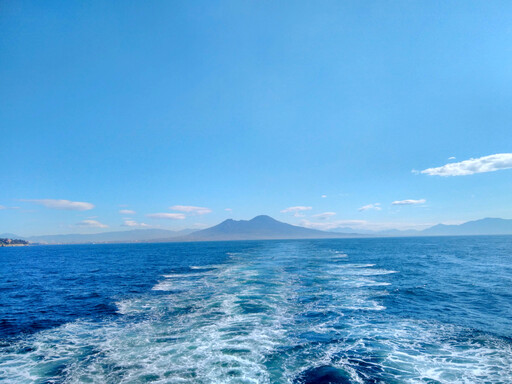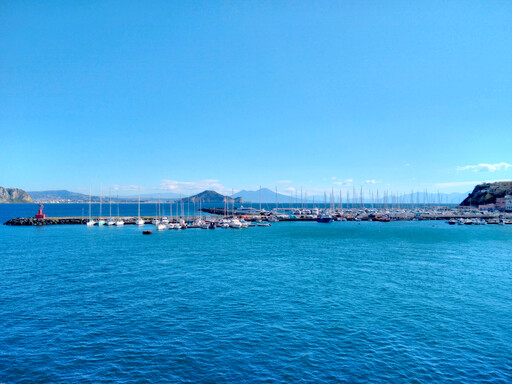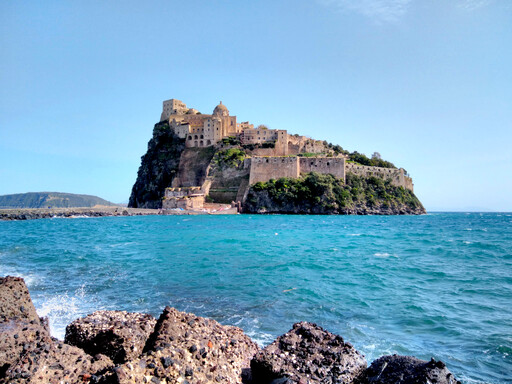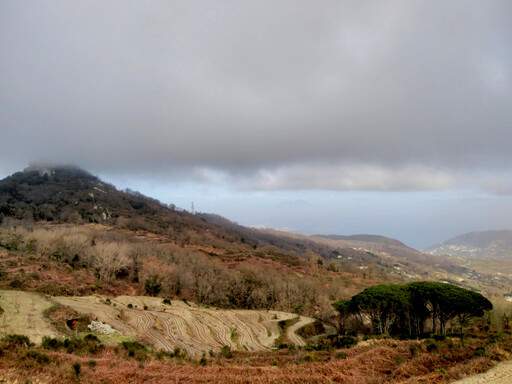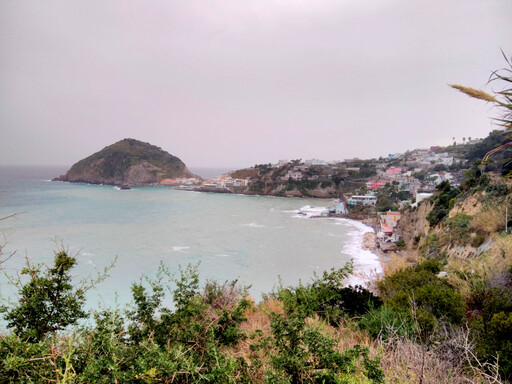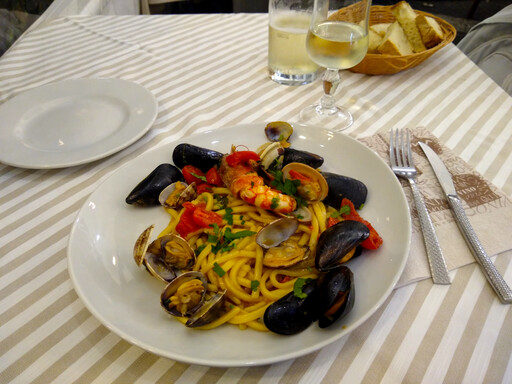Ischia
The last stop of my marathon in the Gulf of Napoli. I had become so enamored of the island from watching it all the way across the Gulf of Gaeta, more than 60km away — it is located right between the two gulfs, in the area where Campi Flegrei, the huge volcanic caldera, enters the Mediterranean sea, forming Penisola flegrea and the surrounding islands — seeing its dim figure through the maritime mist, its shaded contour against the colored sky at sunset, its dark green suspended in the bright blue where both sky and sea meet on sunny days (see the other posts where it makes an appearance), that I could not leave Campania without going there.
Napoli, the Νεάπολις, and the surrounding area was the center of Magna Graecia, the Greek colonies in southern Italy, and the settlement of Ischia goes back to the 9th century B.C. as a trading post in the Mediterranean. Its archaeological museum is home to one of the earliest inscriptions in the Greek language ever found, a cup made in an Aegean island in the 8th century B.C., discovered just 70 years ago in a tomb in the island.
The trip from Napoli starts in Porta di Massa, the port at the center of the city, from which also depart boats to Capri and other destinations in and around the gulf. It takes about 90 minutes for the ferry to get there (the faster hydrofoil takes just over an hour), but that is hardly noticeable, since there isn't a single minute along the path without beautiful views of the coast, the city of Napoli, the island of Nisida, Capo di Posillipo, the island of Procida, etc., as well as those across the gulf: Vesuvius, Capri, and the Sorrento peninsula.
There was no chance I could explore the entire island (it is the largest in the region, almost 50km²), since I had only a single day to visit it, so I just decided to explore without planning much in advance (but that also just means I'll have to return =).
The day started very sunny, and the deep azure typical of the waters of the Gulf was displayed in its full glory all along the northeastern coast, from Punta San Pietro all the way to the castle. After a stop for lunch and a bus trip to the village of Fontana, the weather turned very misty as I made my way to monte Epomeo, the highest point of the island (788m) and, by the time I got to the summit, it was almost completely surrounded by clouds and the shore, just a few kilometers away, was barely visible.
Climbing down the mount straight towards the south leads to the thermal waters of Sant'Angelo, where the high sulphur content of the volcanic water springs creates a natural swimming pool spanning the entire coast. As the sun was starting to set, all I had time left for was another bus ride to the port to take the ferry back to Napoli, where the day ended with some pasta, seafood, and vino alla spina (naturally) in I Sapori di Parthenope, a great local restaurant next to the central station I had to visit a second time.
ὀρθὸν οὖν εἶναι χρή, οὐχὶ ὀρθούμενον.
A man then must stand erect, not be kept erect by others.
Ὀρθός, μὴ ὀρθούμενος.
Be thou erect, or be made erect.



